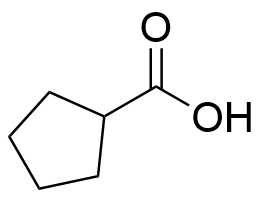Binding Properties
| 𝜈 | Molecule 1 : 1 Host | ||
| Ka = | 543.0 | ± 37.0 | M-1 |
| Kd = | |||
| logKa = | |||
| T | 25.0 °C | ||
| Energy | kJ mol-1 | kcal mol-1 | |||
|---|---|---|---|---|---|
| ΔG | = | -15.61 | ± 0.17 | -3.73 | ± 0.04 |
These are the specifications of the determination of the experimental results.
| Detection Method: | Direct | ||
| Assay Type: | Direct Binding Assay | ||
| Technique: | Nuclear Magnetic Resonance | ||
Detailed information about the solvation.
| Solvent System | Buffer System | 10 mM sodium tetraborate buffer pH-9.2 |
| Solvents | Deuterium Oxide | |
| Additives | Sodium tetrabor... | 10.0 mM |
| Source of Concentration | estimated | |
| Total concentration | 10.0 mM | |
| pH | 9.2 |
Please find here information about the dataset this interaction is part of.
| Citation: |
C. L. D. Gibb, B. C. Gibb, SupraBank 2026, Binding of cyclic carboxylates to octa-acid deep-cavity cavitand (dataset). https://doi.org/10.34804/supra.20210928372 |
| Link: | https://doi.org/10.34804/supra.20210928372 |
| Export: | BibTex | RIS | EndNote |
Please find here information about the scholarly article describing the results derived from that data.
| Citation: |
C. L. D. Gibb, B. C. Gibb, J Comput Aided Mol Des 2013, 28, 319–325. |
| Link: | https://doi.org/10.1007/s10822-013-9690-2 |
| Export: | BibTex | RIS | EndNote | |
Binding Isotherm Simulations
The plot depicts the binding isotherm simulation of a 1:1 interaction of Cyclopentanecarboxylic acid (0.03683241252302026 M) and Octa acid (0 — 0.07366482504604052 M).
Please sign in: customize the simulation by signing in to the SupraBank.




